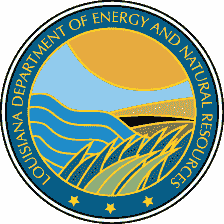Office of Conservation
$5.4 MILLION AWARDED FOR MYRTLE GROVE AND LITTLE VERMILION BAY RESTORATION PROJECTS IN COASTAL LOUISIANA
Contact: Gordon Helm/NMFS
GORDON_J_HELM@ssp.nmfs.gov
(301)713-2370
Phyllis Darensbourg/LDNR
(504)342-8955
Two projects to protect or enhance approximately 12,000 acres of Louisiana wetlands were recently approved for funding by the Coastal Wetlands Planning, Protection and Restoration Act Task Force, the National Oceanic and Atmospheric Administration and the Louisiana Department of Natural Resources jointly announced.
The two Louisiana projects will be managed through a federal/state partnership agreement. Project development and management funds for the two projects will be administered by NOAA's National Marine Fisheries Service Restoration Center, which will use local designers and contractors to implement the two projects. The state of Louisiana, through the Department of Natural Resources, will be responsible for all land rights acquisitions, engineering, construction, monitoring, and operation and maintenance of the project.
"This is yet another example of the excellent state-federal partnership working to protect Louisiana's wetlands," said Tom Bigford, deputy director of NOAA's Office of Habitat Protection and a member of the coastal act task force.
"Cost-effective projects are critical to our program and we are committed along with our federal partners to these needed coastal projects," said Jack Caldwell, secretary of the Louisiana Department of Natural Resources.
The Coastal Wetlands Planning, Protection and Restoration Act Task Force awarded $4.5 million for the design and construction of the Myrtle Grove Freshwater Diversion Project. An additional $10.5 million will be provided by the coastal act over the next two years as the project is designed and moves to construction.
The project is located near the community of Myrtle Grove, La., along the west bank of the Mississippi River in Plaquemines Parish. Large siphon pipes will be used to divert approximately 2,100 cubic feet of water per second from the Mississippi into a project site of more than 15,000 acres.
When the siphon is constructed, the project will protect 1,117 acres of brackish marsh, enhance approximately 6,200 acres of brackish marsh and 3,950 acres of submerged aquatic vegetation, and create 150 acres of new marsh. Louisiana officials expect to begin the project in September 1996.
Also awarded funding was the Little Vermilion Bay Sediment Trapping Project. The $900,000 project is located southwest of Intracoastal City, La., near the intersection of Little Vermilion Bay, the Gulf Intracoastal Waterway and Schooner Bayou. This portion of Vermilion Bay has shoaled from approximately five feet to one and a half feet over the past 30 years. This shallow embayment was caused by sediment transported down the Intracoastal Waterway from the Wax Lake Outlet of the Atchafalaya River. Two navigational channels trap a disproportionate amount of sediment moving through Little Vermilion Bay.
The Little Vermilion Bay project will create a series of narrow channels angling away from the two navigational passageways into shallow water. The new channels will facilitate sediment transport into the shallow areas, filling them and creating emergent wetlands. Dredged material from the navigational channels will be deposited to create long, linear marsh terraces to protect the shallow areas from wave action and to encourage marsh establishment.
The project is expected to create 450 acres of marsh and submerged aquatic vegetation, and protect an additional 51 acres when completed.
Also known as the Breaux-Johnston Act, the coastal act program was established to restore, protect, and enhance coastal wetlands in Louisiana and throughout the country. Through the program, the federal government provides 75 percent of the funds, while the state of Louisiana contributes a 25 percent share from their Wetlands Conservation and Restoration Trust Fund.
NOTE: All NOAA press releases, and links to other NOAA material, can be found on the NOAA Public Affairs World Wide Web home page, http://www.noaa.gov/public-affairs. If you'd like to receive these releases by electronic mail rather than fax, please send an e-mail to jslaff@hq.noaa.gov
News Archives »